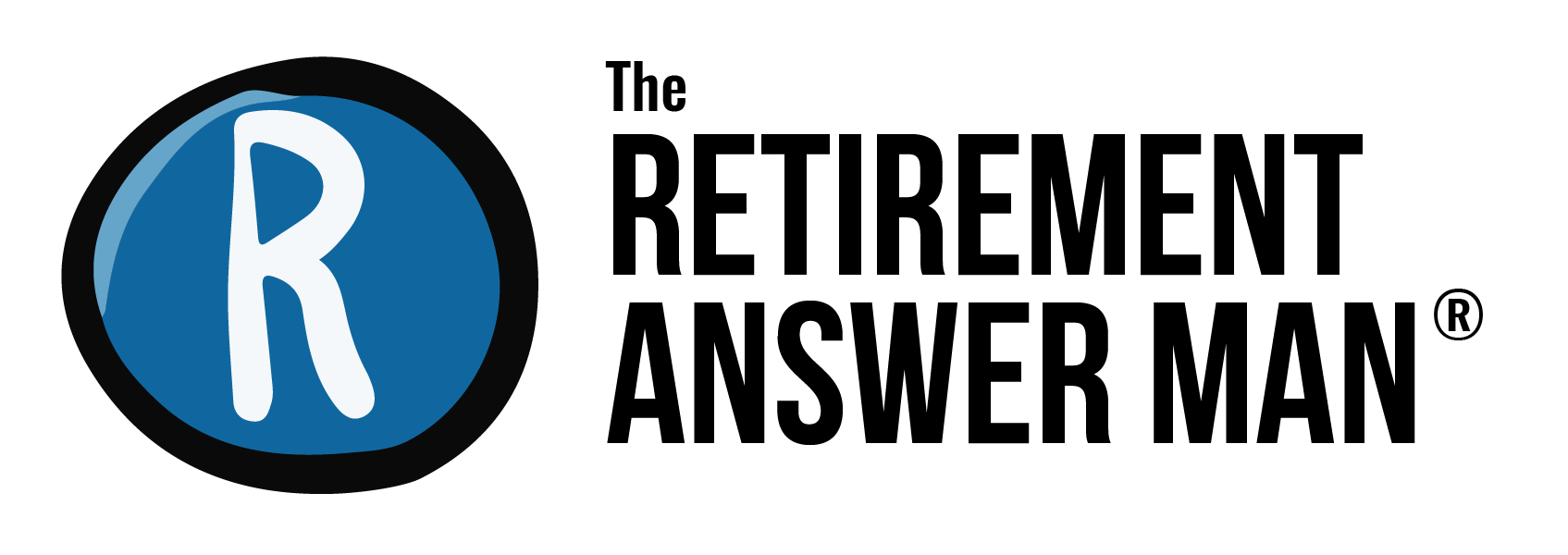What’s that mean?
We try our best to keep information approachable here on The Retirement Answer Man® podcast. That being said, there are a few financial terms in our regular lexicon that you’ll want to understand in order to get the most out of our show. Grab your nerd hats, and get ready to dive in!
Financial Capital
The financial assets contained in your investment and bank accounts.
Fundedness Level
This measures an individual’s or couple’s financial preparation for retirement. To calculate, compare your projected financial consumption during retirement with projected income, current assets, projected returns, and the impacts of inflation. A plan can be Underfunded, Constrained, or Overfunded. Listen and learn more about fundedness.
Funding Philosophy
You have a few strategic options when it comes to how you will fund your retirement.
Systematic Withdrawal: This approach takes periodic withdrawals from investment accounts to fund the costs of retirement that exceed income from Social Security, pensions, and annuities. When implementing this approach, it is sometimes recommended to use a Safe Withdrawal Rate (think the 4% rule) to ensure that funds are not exhausted before the end of life.
Asset/Liability Matching: This approach focuses on allocating financial capital to match the timing of planned consumption (liability). When implementing this approach, assets are divided between contingency, floor, upside, and longevity categories.
Safety-First: This approach emphasizes creating guaranteed income streams using tools like pensions and annuities to cover annual expenses.
A blended approach. Most people implement a strategy that incorporates elements of both of these approaches.
Listen to our series on Retirement Withdrawal Strategies.
Household Balance Sheet
A summary of projected income from all sources compared to all baseline retirement costs, needs, wants, and wishes. Amounts are converted into Present Value. Result produces a fundedness level. A Household Balance Sheet template and how-to lesson are included in Rock Retirement University.
Human Capital
Project income from working, either full or part-time.
Monte Carlo Simulation (MCS)
A simulation tool that utilizes randomized market returns to test the sustainability of financial plans through various market environments. Results are reported as a probability of success, or the percent of cases where the plan meets retirement goals without completely depleting assets (a.k.a. Running out of money).
Net Worth Statement
A summary of assets vs. liabilities. Access our free Building Your Net Worth template in the Resource Library.
Pie Cake
An investment allocation method designed to reduce market risk to retirement funds in the near term while accounting for long-term risks like inflation and longer than expected life. A pie cake strategy can provide psychological comfort on how retirement will be funded in the near-term and permits continued growth for future expenses. Each cake “layer” consists of a different allocation pie chart.
Layer 1 - Used for near-term retirement expenses and contains primarily cash or cash-like investments.
Layer 2 - You’ll want some stability in this layer but also some income. It could be made of bonds that will be maturing, stable value funds, and some cash.
Layer 3 – The objective of this layer is income. A good mix could include bond and real estate equities, but be sure to consider moderate growth.
Layer 4 - The most aggressive growth layer with the longest time horizon.
Plan of Record
Your initial baseline retirement plan. To arrive at the plan, you’ll want to consider all your needs, wants, and wishes, as well as review all the income sources available to you in retirement. Once you have created a Feasible plan of record, you can consider ways to make the plan Resilient and finally Optimized. Detailed instruction on creating your Plan of Record is available through Rock Retirement University. For a general overview, listen to our How to Plan Your Agile Retirement series.
Social Capital
For financial planning purposes, the income projected from pensions, social security, and annuities.
Retirement Policy Statement (RPS)
A guiding document produced at the conclusion of the first round of the retirement planning effort and is modified/updated with each revision to the retirement plan. Captures the overarching vision of the retirement experience, the values and virtues that influence that vision, along with specific dreams and goals. It includes the preferred funding strategy and highlights near, mid, and far-term actions with an associated timeline that will ensure its success. While it is possible to create an RPS after developing a Feasible Plan, the RPS will provide the most value if the Plan is subjected to Resilience and Optimization review before it is completed.

